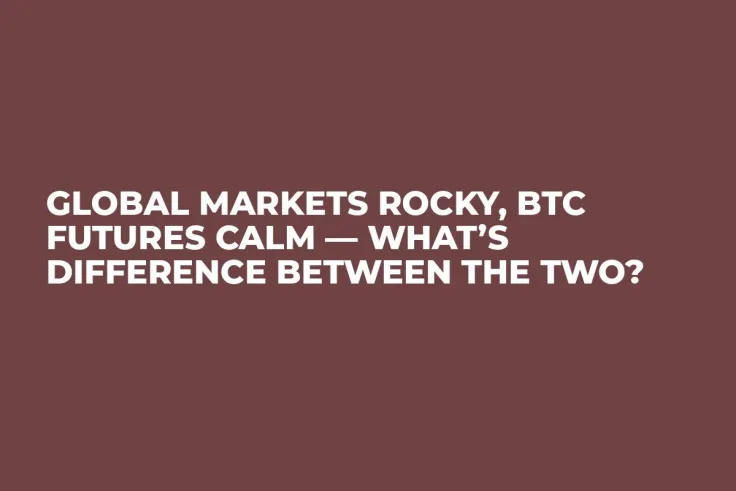
If ever there was a ‘flippining’ in the cryptocurrency markets, it has to be the volatility. Once known for its incredible price swings, Bitcoin has become a model asset that is breaking records with its calmness.
So much so that even products based off of the formerly volatile asset are following its trend. Bitcoin futures have reached record calmness, according to CBOE analysis, and this is with the backdrop of a rocky and quite volatile traditional market.
For this reason, it is probably a good time to delve into what differentiates Bitcoin futures from traditional asset futures, other than the product on which they are based. If Bitcoin and its features are hitting bouts of such calmness, perhaps, it can be explained in comparing the product to that of other future contracts.
Understanding futures
A futures contract is something that has long been a part of the traditional marketplace. Simply put, it can be thought of as a predefined agreement made between two parties that have mutually agreed to buy or sell a particular commodity or even currency at a pre-established price — as well as a set time in the future.
Investors enjoy futures contracts as they offer protection from price volatility and sudden shifts in the value of the asset, commodity, or currency. It thus becomes relevant why CBOE and CME raced to be the first institutionalized financial services to offer these contracts on the then highly volatile Bitcoin. It would enable investors to have their cake and eat it, too.
How futures apply to Bitcoin
Because Bitcoin can be seen as a currency or as an asset, it is easy to apply the futures financial product to it. A Bitcoin futures contract will always be linked to the trading price of Bitcoin — a principle that will apply to any other futures option as well, be it a stock, currency, asset, or commodity.
Both traditional and Bitcoin futures use the concept of leveraging, enabling the investor to not have to own the entire amount of capital in order to take a certain position in the market. It is because of this leveraging that the risk is mitigated, be it Bitcoin or any other asset.
Where do traditional market and Bitcoin part ways?
Really, on the face of it, there should be no differences between a Bitcoin future and that of the traditional markets as they are simply financial products based on different assets. However, the asset in question in terms of Bitcoin futures is something that has never really been seen before.
The youthfulness of Bitcoin as an asset that can be traded with futures contracts leaves the investor with a very short trading history. The price data available only stretches back a few years, and even still, it is highly irregular.
Cryptocurrencies really do not follow the path of any macroeconomic indicators and are setting their own precedents in terms of price fluctuations as they go along. Thus, trying to predict and prophesize on the movement of Bitcoin is extremely difficult.
This goes back to the ‘flippining’ in volatility. When CBOE and CME launched their futures, Bitcoin was surging rapidly to $20,000, and then it fell just as dramatically in huge waves of volatility. Now, the cryptocurrency is more stable than some of the biggest stocks, and that could never have been predicted.
Another core difference lies in the fact that nearly all traditional futures make use of fiat, hard or financial assets as collateral. However, in the case of crypto, investors first need to convert their holdings into fiat, then post them as collateral.
Much of the same
The idea behind Bitcoin futures being launched by traditional future offers like CBOE and CME was to entice investors with a tool they know and understand. And for the most part, there is no tangible difference for a traditional investor; in fact, the assurance of less risk opens the door to the previously volatile market.
But, operating these futures contracts are not as easy as other assets where traditional investors would be well versed, and thus it is important to note that there may well be some give and take before traditional investors master this new area.
 Dan Burgin
Dan Burgin Vladislav Sopov
Vladislav Sopov U.Today Editorial Team
U.Today Editorial Team